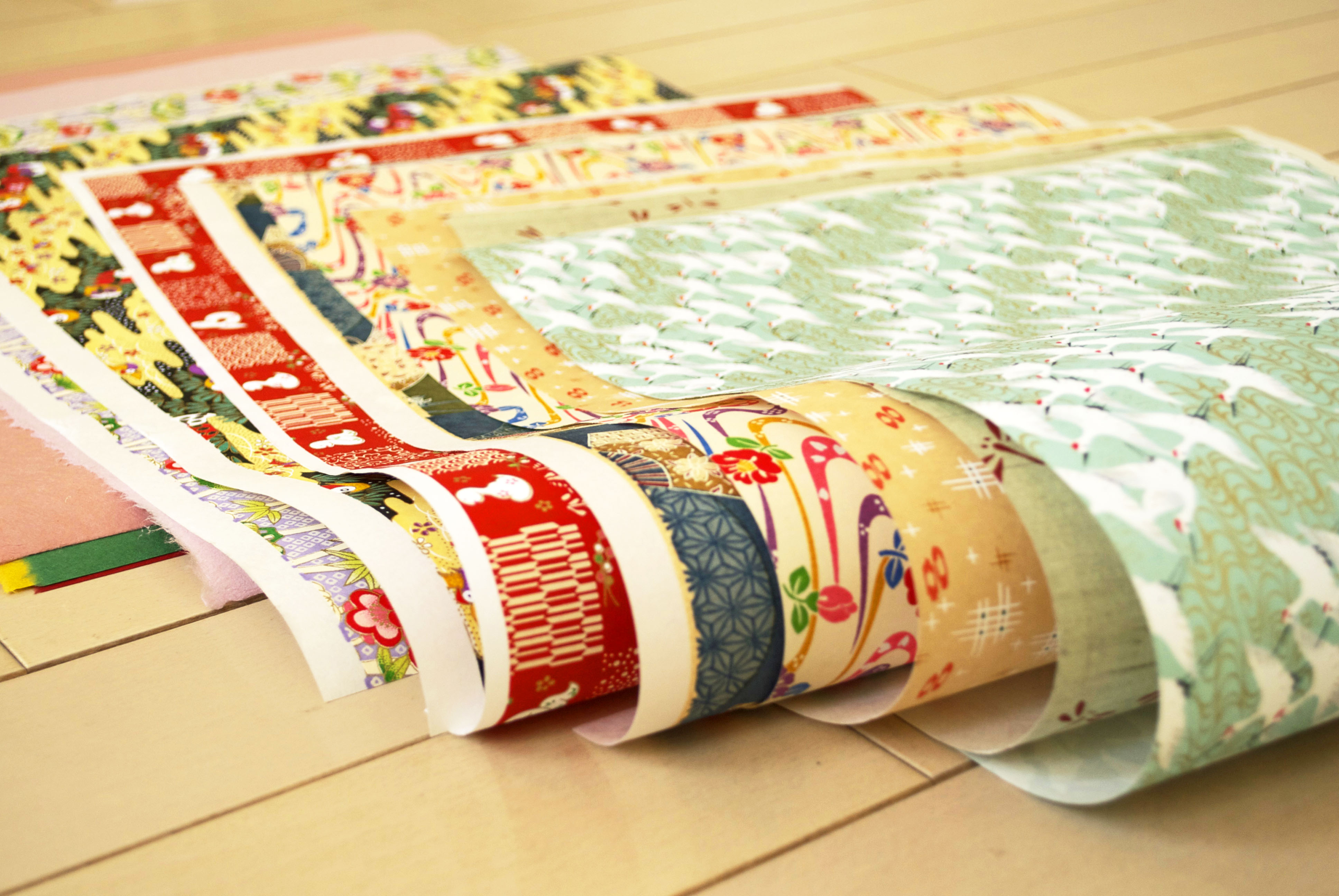Washi Arts carries an extensive range of the finest Japanese papers including handmade and machine-made papers of kozo gampi and mitsumata fibers. Traditional handmade Japanese paper is collectively known as washi.
 Japanese Washi Paper Oh My Omiyage
Japanese Washi Paper Oh My Omiyage
Washi paper is one of of Japans most fundamental and often overlooked artistic products.

Japanese washi paper. It has an understated translucency and subtly irregular texture which is pleasant to the touch. In fact washi paper is so ingrained in Japanese culture there are literally towns build around washi paper. Traditionally Washi paper was used for handwriting calligraphy printing and artistic purposes in short for every conceivable use of paper.
The term Washi means Japanese paper. During 1300 years of production it has formed the backbone of many other Japanese artforms. Paper produced in Japan around this period were made one-by-one from fibers such as Kouzo mulberry fiber Mitsumata paperbush and Gannpi.
This graceful four foot tall folding Japanese Shoji screen features an avant-garde wooden lattice. Even though it is thin it is firm and sturdy making it ideal for painting preservation and restoration. Do you know what the difference between washi and other types of.
The Ecchu-washi was grown with medicine business like wrapping paper and bags for the powder and tablets. She now makes paper using vegetable and fruit waste. AIJP papers faithfully retain the unique texture of Japanese washi.
You can also choose from virgin washi japanese paper as well as from home decoration wedding decoration gift and art collectible washi japanese paper and whether washi japanese paper is waterproof greaseproof or antistatic. Scroll down to see the categories or use the quick links below. On November 27 2014 Japan time three types of Japanese washi paper became registered as an Intangible Cultural Heritage.
These papers inspire strength beauty and quality. It is also strong absorbent. Japanese Washi Paper 101.
Traditional Washi is fine paper made from fibers of the Gampi Tree the Misumata Shrub the Mulberry bush Bamboo Hemp Rice and other natural materials. The paper feels alive in your hands and holds a quiet integrity and beauty. Read on to learn everything you need to know about this wonderful import.
Washi is Japanese paper made from the mitsumata kozo and wild gampi shrubs. Washi is traditional Japanese paper made using techniques developed over 1300 years ago. Washi paper Japanese paper became a UNESCO Intangible Cultural Heritage.
There are probably many people who have seen this news. The fibers bark flower petals and other inclusions provide great texture and character to these papers from Japan. Grown from natural plant fibers washi is a.
The Western skills were brought into Japan in the beginning of the Meji Era. After WW2 the living national treasure of cloth-dyeing artisan Mr Serizawa Keisuke 芹澤銈介 started dyeing on papers with Keijusha instead of clothes because of its lack. They include carrots that give paper a warm color and onions that produce stronger feature.
A wide variety of washi japanese paper options are available to you such as mechanical pulp chemical pulp. Craftswoman Masami Igarashi has 25 years of experience manufacturing washi and related products. It is now on UNESCOS list of Intangible Cultural Heritage.
Dating back for over 1400 years to 610 CE Washi has long been prized for its luxurious textures durability and longevity. What Is Japanese Washi Paper. These impressive papers suitable for photographers artists designers are made with natural fibers pure mountain water-insuring museum quality archival prints.
Japanese Washi paper is one paper that is Japan famous for but its uses go beyond artistic endeavors. Washi Arts Japanese Paper Product Menu. In fact it can help you and your office manage everything from COVID-19 to the common cold.
Paper made from koi is robust and easy to handle even when wet. Awagami Inkjet Papers are revolutionary Japanese washi papers created for the highest quality digital inkjet prints. During Japans period of modernization under Western influence in the late 19 th and early 20 th centuries Washi paper was largely edged out of everyday use by cheaper mass-produced lower-quality yoshi paper.
An established paper maker in central Japan has come up with a new type of washi thats also eco-friendly. Washi Arts stocks a wide range of solid color Japanese paper including handmade washi such as Moriki Kozo and Matsuo Kozo as well as embossed and textured light and cover weight papers. The difference between Washi Japanese Paper and Youshi Western Paper There is no distinct difference between Washi and Youshi.
What is Washi Paper Used For. The supple spruce frame and translucent washi paper panels are elegantly light and delightfully airy making it the perfect choice for adding a decorative accent dividing a room or. It is commonly used for traditional Japanese interior doors such as shoji sliding blind doors and fusuma cupboard doors.